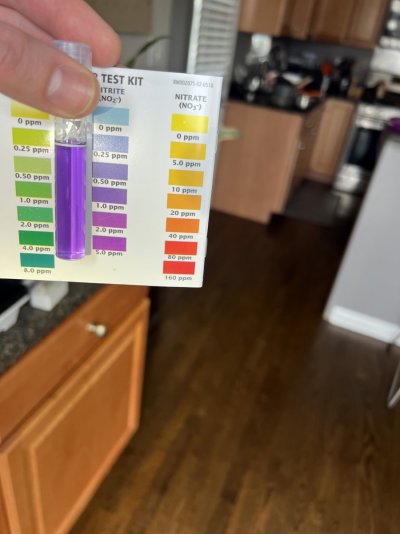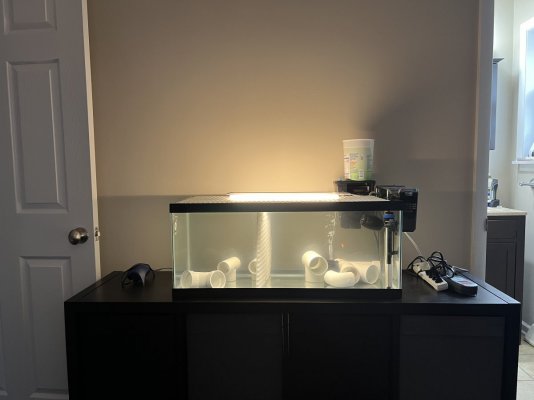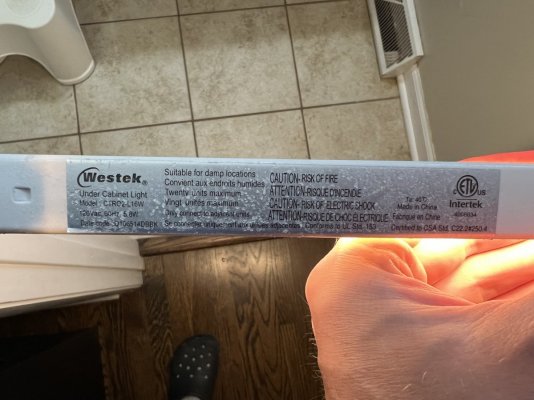I lost a sunset anthia this morning in QT. It was with 3 other sunset anthias, 1 princess anthia, and a YWG. I’m 5 months into the hobby doing my 1st quarantine.
I added fish to this QT about 6 weeks ago on March 22 to a tank that had been cycling for nearly a month. 4 days ago I did ~80% water change, thoroughly rinsed a heavily soiled sponge and wiped off film from the inside of the glass. I then did a standard initial dose of prazipro.
Water tests from API this morning showed: 0 ammonia, 5ppm nitrates, nearly 0 phosphate; however nitrites were atleast 1.5 ppm or so, maybe much higher. Picture of nitrite test, deceased anthia, and tank after water change. Ammonia has also been clearly 0 per seachem ammonia alert for weeks.
I’m trying to determine: 1) what caused my nitrite spike? Tap water rinsing 1 of 4 sponges/media bags + wiping film off inside of glass during water change or possibly an interaction with prazipro? 2) what killed the sunset anthia? My best guesses are nitrite poisoning or nitrite stress induced Uronema? The only reason I suspect Uronema could be at play is bc there is some red near the rear of the fish and I lost another sunset anthia about a week in due to what seems to have been Uronema. EDIT: The sunsets somewhat regularly assert their dominance and bite eachother; this typically results in a large red spot on the fish and I don’t know how to tell the difference between this and uronema.
I assumed my nitrite couldn’t spike once the cycle completed and ammonia was stable at 0, so I have not been tracking nitrite. Could someone with more experience please help me understand what happened and what I did wrong?
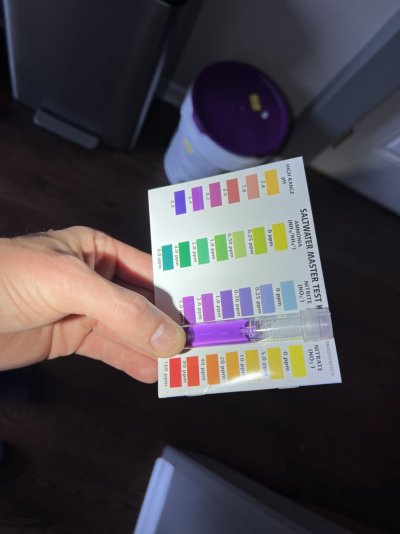
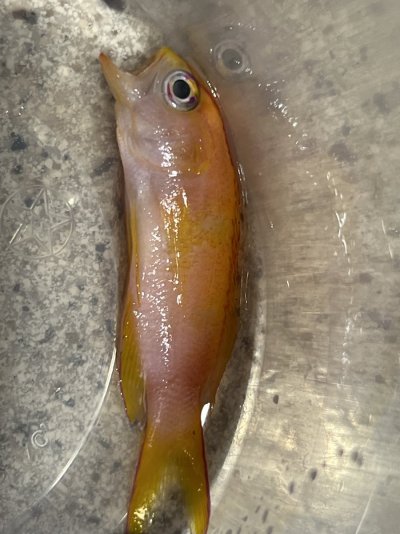
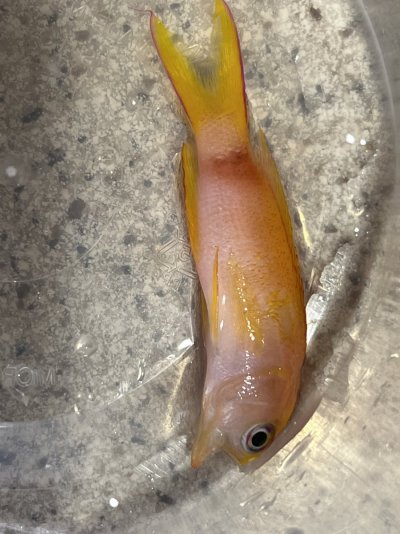
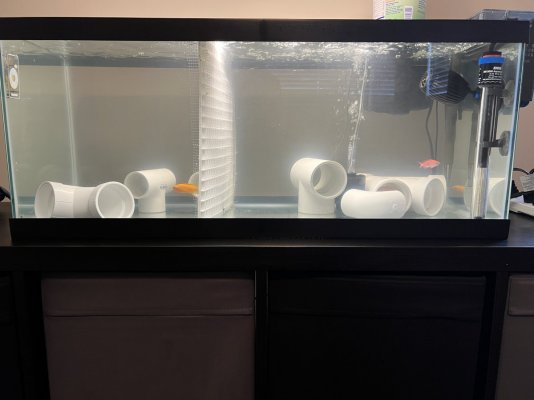
I added fish to this QT about 6 weeks ago on March 22 to a tank that had been cycling for nearly a month. 4 days ago I did ~80% water change, thoroughly rinsed a heavily soiled sponge and wiped off film from the inside of the glass. I then did a standard initial dose of prazipro.
Water tests from API this morning showed: 0 ammonia, 5ppm nitrates, nearly 0 phosphate; however nitrites were atleast 1.5 ppm or so, maybe much higher. Picture of nitrite test, deceased anthia, and tank after water change. Ammonia has also been clearly 0 per seachem ammonia alert for weeks.
I’m trying to determine: 1) what caused my nitrite spike? Tap water rinsing 1 of 4 sponges/media bags + wiping film off inside of glass during water change or possibly an interaction with prazipro? 2) what killed the sunset anthia? My best guesses are nitrite poisoning or nitrite stress induced Uronema? The only reason I suspect Uronema could be at play is bc there is some red near the rear of the fish and I lost another sunset anthia about a week in due to what seems to have been Uronema. EDIT: The sunsets somewhat regularly assert their dominance and bite eachother; this typically results in a large red spot on the fish and I don’t know how to tell the difference between this and uronema.
I assumed my nitrite couldn’t spike once the cycle completed and ammonia was stable at 0, so I have not been tracking nitrite. Could someone with more experience please help me understand what happened and what I did wrong?










